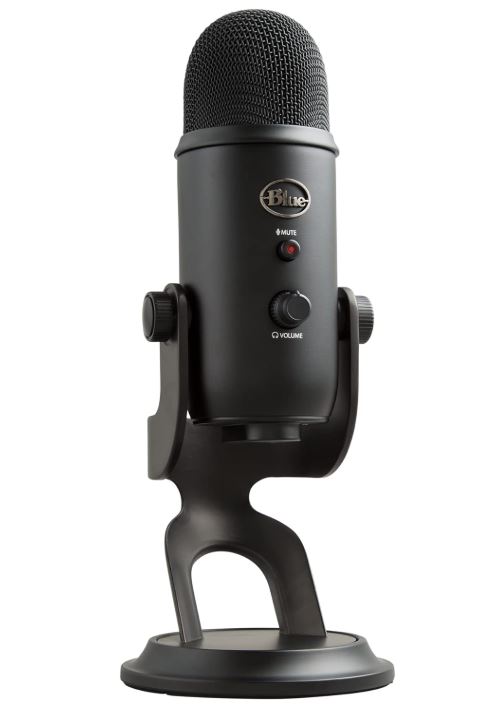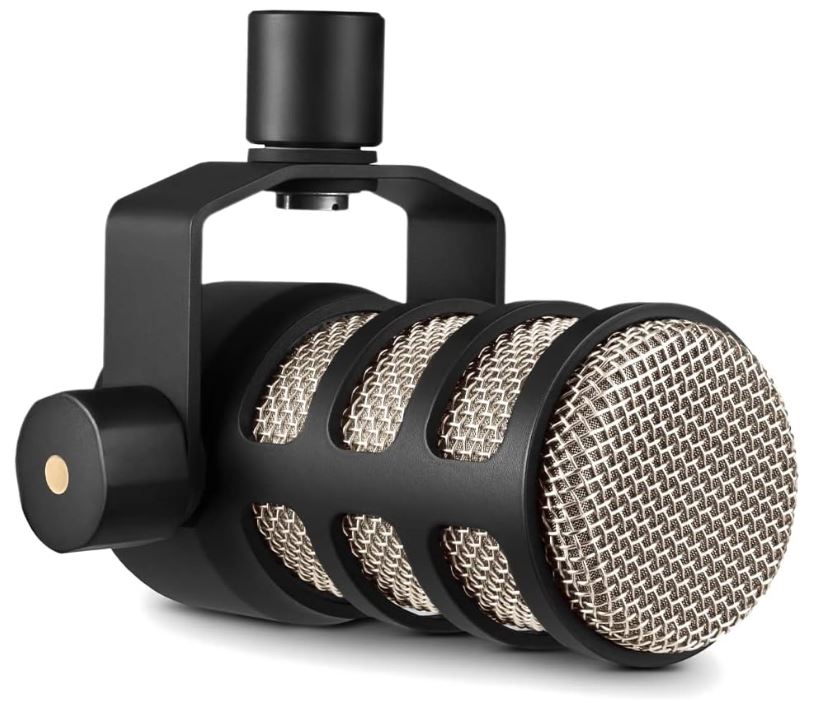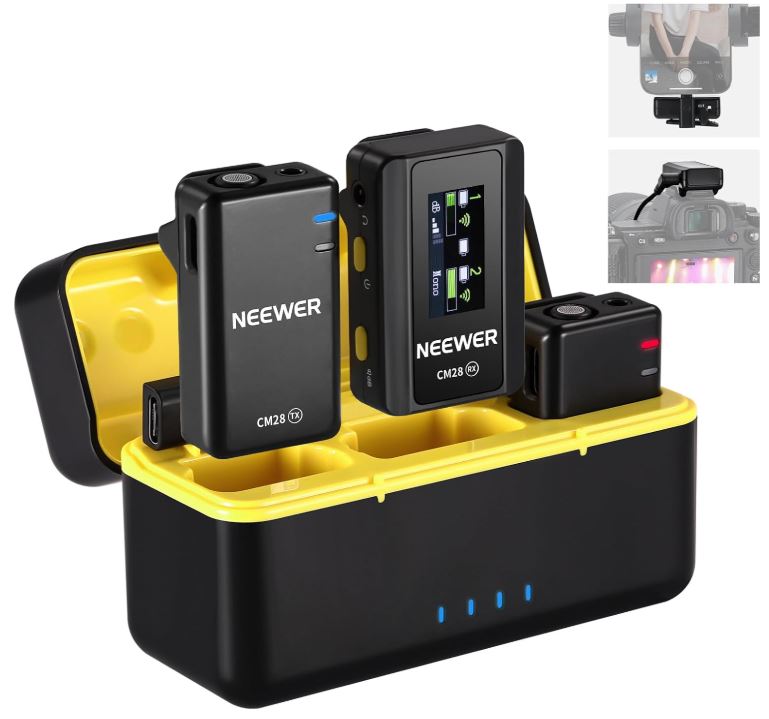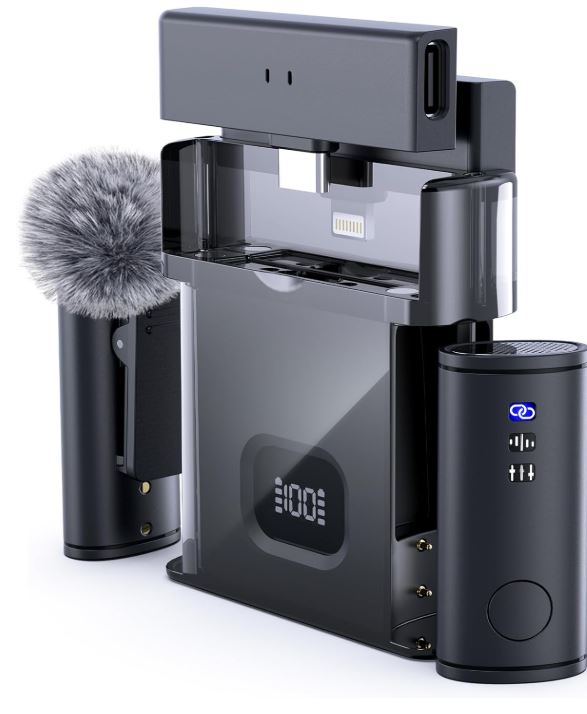Discover the best microphone arm to elevate your audio experience and take your content creation to the next level!
Introduction
Are you tired of awkward microphone placements ruining your podcasts or streaming sessions? Finding the best microphone arm can dramatically improve your audio quality and overall setup. Interestingly, research shows that using an adjustable microphone arm can reduce unwanted noise by up to 30%, making it a game-changer for creators. In this article, we will explore the top microphone arms on the market, their features, and how to choose the right one for your needs.
Key Facts About Microphone Arms
| Feature | Details |
|---|---|
| Weight Capacity | Varies by model, typically ranges from 1 to 4 kg |
| Material | Commonly made from steel, aluminum, or plastic |
| Adjustment Range | Most arms can extend from 14 to 30 inches |
| Mounting Options | Table clamp, desk mount, or wall mount |
Outline of Subtopics
- Understanding Microphone Arms
- Types of Microphone Arms
- Benefits of Using a Microphone Arm
- Choosing the Right Microphone Arm
- Top Microphone Arm Brands
- How to Install a Microphone Arm
- Microphone Arm Accessories
- Adjusting Your Microphone Arm for Optimal Use
- Common Issues with Microphone Arms
- Microphone Arm Maintenance Tips
- Comparing Budget vs. Premium Microphone Arms
- Microphone Arm for Streaming vs. Recording
- Real User Reviews and Experiences
- Case Study: Professional Podcaster’s Setup
- Expert Opinions on Microphone Arms
- The Future of Microphone Arm Technology
- Microphone Arm Safety Tips
- How Microphone Arms Enhance Sound Quality
- Microphone Arm Compatibility with Different Microphones
- Environmental Impact of Microphone Arms
- Conclusion and Call to Action
Understanding Microphone Arms
Our Top Picks - Best USB Microphones 🎙️
Looking for the perfect microphone? Check out our top-rated USB microphones for crystal-clear sound & studio-quality performance! 🎧✨
A microphone arm is a tool that allows you to position your microphone in an optimal location for recording or broadcasting. It provides flexibility in adjusting the height and angle of your microphone, which can significantly impact sound quality. Without a suitable arm, you may find yourself struggling with microphone placement or dealing with unwanted background noise.
The basic design of a microphone arm typically includes a horizontal boom that extends from a vertical pole. This setup enables users to move the microphone closer to their mouth while keeping it out of the camera frame for video content. Understanding how these arms function is essential for selecting the best one for your needs.
Many microphone arms feature a spring-loaded mechanism that allows for smooth adjustments. Some models even come with built-in cable management systems to keep your workspace tidy. The right microphone arm can transform your recording environment into a professional-sounding studio.
Types of Microphone Arms
Microphone arms come in various types, each designed for specific needs and environments. The most common types are desk-mounted, wall-mounted, and portable microphone arms. Desk-mounted arms are ideal for podcasters and streamers who need stability and flexibility in their setup.
Our Top Picks - Best Wireless Microphones 🎤
Looking for a wireless solution? Check out our top-rated wireless microphones for hassle-free, high-quality sound! 🎶✨
Wall-mounted microphone arms are perfect for those with limited desk space or who want a more permanent setup. These arms can be fixed to a wall at the desired height, providing a clean and organized look. Finally, portable microphone arms are great for on-the-go creators who need a lightweight and compact solution.
When selecting a type, consider your workspace, the microphone you use, and how often you plan to move your setup. Each type has its benefits and limitations, so understanding your requirements is crucial.
Benefits of Using a Microphone Arm
Using a microphone arm offers numerous advantages that can enhance the quality of your recordings. Firstly, it allows for precise microphone positioning, which minimizes background noise and improves sound capture. This is particularly beneficial for users in shared or noisy environments.
Secondly, a microphone arm can save space on your desk. By elevating the microphone, you can free up valuable real estate for other equipment or personal items. Many arms also feature cable management, reducing clutter and creating a more professional appearance.
Finally, the ergonomic benefits of using a microphone arm cannot be overstated. With an adjustable arm, you can position the microphone at a comfortable height, reducing strain on your neck and back during long recording sessions.
Choosing the Right Microphone Arm
When selecting a microphone arm, it is essential to consider several factors to ensure you make the best choice for your setup. Start by assessing the weight of your microphone. Most arms have a specified weight capacity, and choosing one that can support your microphone is crucial to prevent damage.
Next, consider the type of mount that best suits your workspace. If you have limited desk space, a desk clamp may be more appropriate, while a wall mount could be better for a more permanent setup. Additionally, think about the adjustability of the arm; you’ll want one that can be easily repositioned to suit your recording style.
Finally, review the materials used in the construction of the microphone arm. Metal arms tend to be sturdier and more durable than plastic options. Investing in a quality microphone arm can significantly enhance your recording experience and longevity of use.
Top Microphone Arm Brands
Several brands dominate the microphone arm market, known for their quality and reliability. One of the top choices is Rode, renowned for its robust and user-friendly designs. The Rode PSA1 is a favorite among podcasters for its exceptional build quality and ease of use.
Another popular brand is Heil Sound, which offers high-end microphone arms such as the PL-2T. This arm is favored by professionals for its heavy-duty construction and versatile mounting options. Blue Microphones also produce excellent arms, with the Blue Compass being a standout for its sleek design and functionality.
Be sure to research and compare models from these brands to find one that fits your specific needs, budget, and aesthetic preferences.
How to Install a Microphone Arm
Installing a microphone arm is a straightforward process that can usually be completed in just a few minutes. Start by reading the manufacturer’s instructions for specific guidance on your model. Most arms will require a table clamp or a mounting bracket, which can be easily attached to your desk.
Once you have the mounting hardware ready, position the arm where you want it and secure it tightly. Ensure that the arm is stable and can support the weight of your microphone. After securing the arm, attach your microphone using the provided clip or adapter, ensuring it is snug and won’t fall during use.
Finally, adjust the microphone arm to your desired height and angle. Test the setup by speaking into the microphone to ensure it captures your voice clearly and is positioned comfortably for use.
Microphone Arm Accessories
To enhance the functionality of your microphone arm, consider investing in accessories that can improve sound quality and usability. A shock mount is a popular accessory that helps isolate the microphone from vibrations and handling noise, providing cleaner audio recordings.
Pop filters are another useful addition, especially for vocal recordings. They help reduce plosive sounds caused by certain consonants, resulting in smoother audio. Additionally, cable management clips can keep your workspace organized by preventing cables from tangling or getting in the way.
Finally, consider purchasing extension arms or adapters if you want to increase the reach of your microphone arm. These accessories can provide additional flexibility and make your setup even more versatile.
Adjusting Your Microphone Arm for Optimal Use
Proper adjustment of your microphone arm is vital for achieving the best sound quality and comfort during your recording sessions. Start by setting the microphone at mouth level; this will allow for clear audio capture without straining your voice.
Next, angle the microphone slightly towards your mouth to minimize background noise. Experiment with different positions to find what works best for you, as each setup and voice is unique. Remember to tighten all the adjustment knobs to prevent the microphone from slipping during use.
Lastly, periodically check your microphone arm adjustments, especially if you frequently move between different recording tasks. Consistent positioning leads to more reliable audio quality and a better overall recording experience.
Common Issues with Microphone Arms
Despite their benefits, microphone arms can encounter several common issues that users should be aware of. One frequent problem is instability, which can occur if the arm is not properly secured or if it is overloaded with a heavy microphone. Always check the weight limit and ensure your microphone is within the specified range.
Another issue is noise transmission. If your arm is not equipped with a shock mount, it can transmit vibrations from your desk, resulting in unwanted noise in your recordings. Consider investing in a shock mount to mitigate this problem.
Lastly, some users experience difficulty in adjusting the arm’s positioning. If the arm feels stiff or difficult to move, it may require lubrication or adjustments to the tension settings. Regular maintenance can help alleviate these issues.
Microphone Arm Maintenance Tips
To ensure the longevity and performance of your microphone arm, it’s essential to carry out regular maintenance. Start by cleaning the arm regularly to remove dust and grime, which can accumulate and affect its functionality. Use a soft, dry cloth and avoid harsh chemicals that could damage the finish.
Next, check the bolts and screws periodically to ensure they are tightened. Loose connections can lead to instability and affect your recording quality. If you notice any wear or damage, consider replacing parts to maintain optimal performance.
Finally, lubricate the joints and moving parts of the microphone arm as needed. This will ensure smooth adjustments and extend the life of the arm. Following these maintenance tips can help you avoid issues and keep your microphone arm in excellent condition.
Comparing Budget vs. Premium Microphone Arms
When shopping for a microphone arm, you will encounter a range of options, from budget-friendly to premium models. Budget microphone arms can be appealing due to their lower price, but they may lack durability and features found in higher-end models.
Premium microphone arms often come with enhanced construction, better weight capacity, and additional features like built-in cable management or shock mounts. Investing in a premium model can lead to improved performance and longevity, making it a worthwhile consideration for serious content creators.
Ultimately, your choice will depend on your specific needs and budget. For casual users or those just starting, a budget option may suffice. However, for professionals or individuals who record frequently, investing in a quality microphone arm is likely to yield better results.
Microphone Arm for Streaming vs. Recording
The needs for a microphone arm can differ significantly between streaming and recording scenarios. Streamers often prioritize flexibility and quick adjustments, as they may need to move their microphone frequently to engage with their audience or switch between different tasks.
On the other hand, those focused on recording may require more stability and precise positioning. For voiceovers or music recordings, having the microphone at a fixed distance and angle can be crucial for capturing the best sound quality.
When choosing a microphone arm, think about your primary use case. If you plan to do both streaming and recording, consider a versatile arm that can accommodate the needs of both activities.
Real User Reviews and Experiences
User reviews can provide valuable insights into the effectiveness and reliability of different microphone arms. Many users praise the Rode PSA1 for its sturdy build and ease of adjustment, making it a favorite among podcasters.
Others have reported positive experiences with the Heil PL-2T, noting its exceptional stability and versatility. Users appreciate that it can support heavier microphones and offers a wide range of motion.
Conversely, some budget models have received criticism for instability and difficulty in adjustments. It’s essential to read user experiences to gauge the best fit for your specific needs and preferences.
Case Study: Professional Podcaster’s Setup
To illustrate the impact of a microphone arm on recording quality, let’s look at a case study of a professional podcaster who upgraded their setup. Initially using a static microphone stand, the podcaster struggled with background noise and positioning inconsistencies.
After investing in a Rode PSA1 microphone arm, they noticed a substantial improvement in audio clarity and ease of use. The ability to adjust the microphone effortlessly allowed them to focus more on content creation rather than technical issues.
This case highlights the importance of having the right equipment to enhance the quality of your recordings and overall podcasting experience. Quality tools lead to better content, which resonates with audiences.
Expert Opinions on Microphone Arms
“A good microphone arm can make a world of difference in your audio quality. It’s not just about the microphone; it’s about how you position it.” – Audio Engineer Jane Doe
Experts agree that investing in a quality microphone arm is essential for anyone serious about audio recording. The right arm not only improves sound quality but also enhances the user experience by providing comfort and ease of use. Professionals recommend considering your specific recording needs and choosing an arm that aligns with your goals.
The Future of Microphone Arm Technology
As technology continues to advance, microphone arms are likely to evolve as well. Innovations may include smart features that allow users to control their microphone settings via apps, enhancing convenience for content creators.
Additionally, manufacturers may focus on sustainability, using eco-friendly materials in production. This shift could appeal to environmentally conscious consumers and lead to a new market for green audio equipment.
Ultimately, the future of microphone arms holds exciting possibilities that could further enhance the recording experience for users around the world.
Microphone Arm Safety Tips
Safety should always be a priority when using a microphone arm. First, ensure that the arm is securely mounted to prevent it from falling, which could damage the microphone or injure someone nearby.
Avoid overloading the microphone arm with a heavier microphone than it is designed to support. This can lead to breakage or accidents during use. Lastly, be mindful of cable management to prevent tripping hazards in your workspace.
Following these safety tips can help you create a safer and more efficient recording environment.
How Microphone Arms Enhance Sound Quality
The positioning of your microphone plays a crucial role in sound quality, and this is where microphone arms excel. By allowing for optimal placement, these arms help capture clear audio and reduce unwanted background noise.
Additionally, using a shock mount in conjunction with a microphone arm can further isolate vibrations and handling noise, leading to more professional-sounding recordings. This is especially important for vocal recordings, where clarity is essential.
In summary, a quality microphone arm directly contributes to better sound quality, making it an invaluable tool for anyone serious about audio production.
Microphone Arm Compatibility with Different Microphones
When choosing a microphone arm, compatibility with your microphone is critical. Most arms come with adjustable mounts or adapters to fit various microphone sizes and shapes. However, it’s always wise to check the specifications to ensure a proper fit.
Some microphones may require specific shock mounts that are compatible with certain arms. Always verify this before making a purchase to avoid any compatibility issues that could hinder your recording experience.
By ensuring compatibility, you can optimize your setup and achieve the best possible sound quality for your recordings.
Environmental Impact of Microphone Arms
As the demand for eco-friendly products grows, the environmental impact of microphone arms is becoming an important consideration. Many manufacturers are shifting towards sustainable materials and production processes to reduce their carbon footprint.
Recycling and upcycling old microphone arms can also contribute to environmental sustainability. Instead of discarding old equipment, consider repurposing or donating it to reduce waste.
By choosing eco-conscious products and practices, content creators can contribute to a more sustainable future while enjoying high-quality audio equipment.
Conclusion
Choosing the best microphone arm can significantly enhance your audio recording experience, whether you’re a podcaster, streamer, or musician. With a wide range of options available, it’s essential to consider your specific needs and preferences.
Investing in a quality microphone arm not only improves sound quality but also adds convenience and comfort to your recording setup. Don’t underestimate the impact of this essential tool on your content creation journey.
We encourage you to share your experiences with microphone arms or ask any questions in the comments below. Your input can help others make informed decisions in their audio endeavors!
Frequently Asked Questions (FAQ)
What is a microphone arm?
A microphone arm is a device that allows for adjustable positioning of a microphone, enabling users to capture better audio quality and reduce background noise.
How do I choose the right microphone arm?
Consider factors like weight capacity, mounting options, adjustability, and compatibility with your microphone when selecting a microphone arm.
Are expensive microphone arms worth it?
Investing in a premium microphone arm often leads to better durability, features, and overall performance, making it worth the cost for serious users.
Can I use a microphone arm for different microphones?
Yes, most microphone arms come with adjustable mounts or adapters that allow them to be compatible with various microphone sizes and shapes.
How do I maintain my microphone arm?
Regularly clean the arm, check for loose screws, and lubricate moving parts to ensure smooth adjustments and longevity.
Is it necessary to use a shock mount with a microphone arm?
While not strictly necessary, using a shock mount can significantly reduce vibrations and handling noise, improving overall sound quality.
- Microphone Arm
- A device that holds and positions a microphone for optimal sound capture.
- Shock Mount
- An accessory that isolates a microphone from vibrations to prevent handling noise.
- Pop Filter
- A screen that reduces plosive sounds in vocal recordings.





